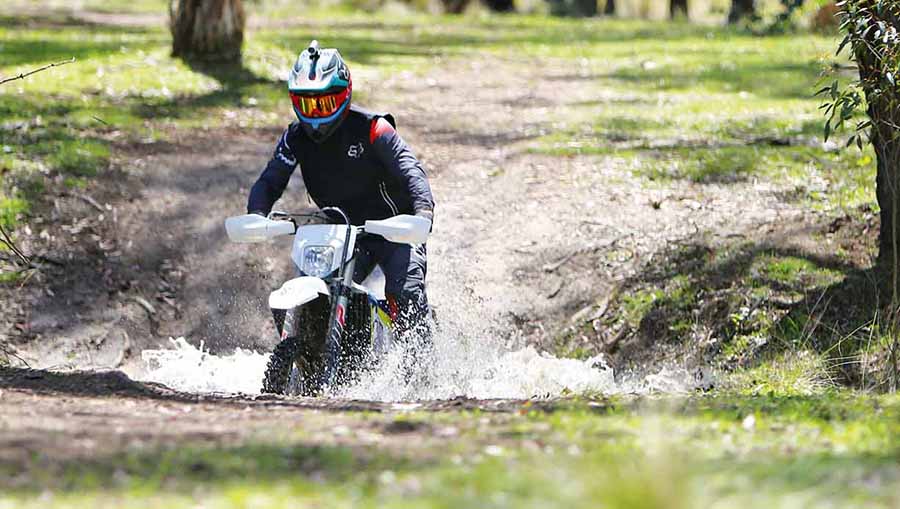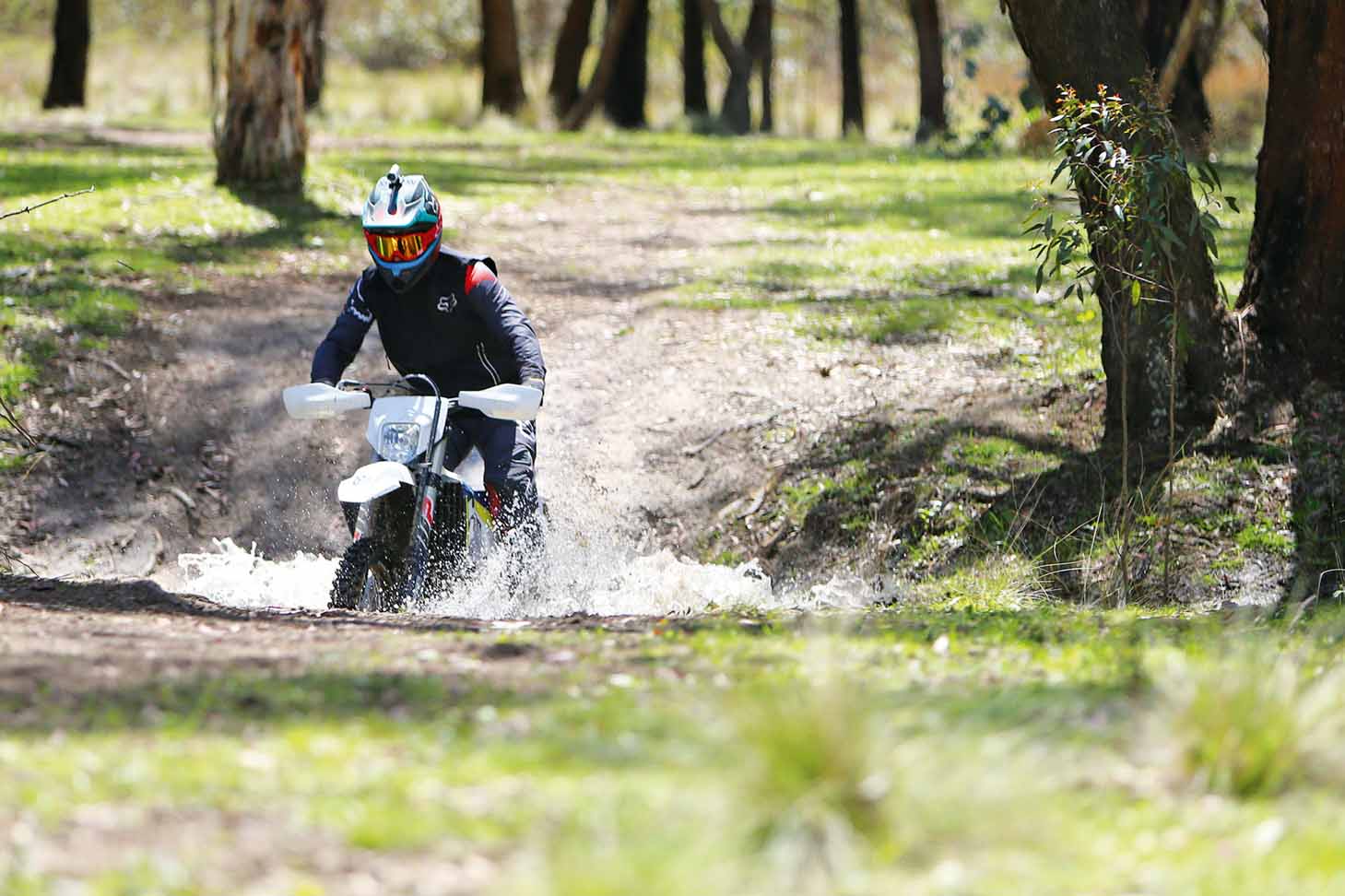
Riding across creek beds is tough work. They’re slippery and can be rocky, with hidden traps that can take a wheel away from you. Here are some tips to help you conquer the creek crossing
STORY SHANE BOOTH PHOTOGRAPHY 56CLIX
SLIP & SLIDE
The first thing you need to come to grips with is that the bike is going to move around. There are all sorts of loose rocks along with slick, muddy sections that will cause your bike to perform movements you aren’t ready for. The key is being comfortable with those movements so you stay fluid with the bike and remain balanced. If you freak out and tense up, your balance goes out the window and you’ll have both feet down in the drink in no time.
STAY STANDING
Approach the creek in the standing position and aim to remain there as long as possible. Staying in the standing position will offer many advantages, starting with your field of vision. When you stand up on the bike you’ll be able see much further ahead, which allows you to spot and then deal with the upcoming sections. It will give you more time to select the best line through the creek. When you stand you also have a better chance of seeing to the bottom of any water; this allows you to gauge depth and whether you should ride through it or not. Standing also takes away the automatic reaction of wanting to put your feet out every time the bike moves unexpectedly. This is a bonus because most of the time those movements are only small — as a wheel slips off a rock or ledge, for example — and don’t require you to put your feet down. So often, riders come to a stop in a creek bed because they’re sitting down and, when the bike makes a sudden movement, the reaction is to put the feet down — usually followed closely by a stalled or stopped bike. Stay standing, keep your vision up and remain fluid with the bike.
YOU STALL, YOU FALL
You must cover your clutch lever with one or two fingers in situations like this. An experienced rider will be using plenty of clutch combined with the throttle to control the amount of drive being delivered to the rear wheel. The aim is to maintain traction on the slippery, uneven creek bed and also be ready to avoid the engine stalling. In a creek, it’s pretty safe to say that if you stall, you fall. The bikes stops here and you just know that right where you go to put your foot down there will be a big hole full of water that leaves you lying on your side.
KEEP MOVING
The ultimate goal is to keep moving forward, almost at all costs. Momentum will mean you won’t need an aggressive throttle, which in turn helps maintain traction. With forward movement also comes balance, so while you keep moving you’ll find it easier to stay upright.

